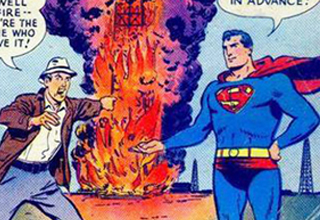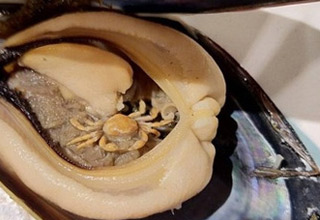AEconomics by RJM, Part I The Dimensional Nature of Money.
As mundane and ridiculous as it may seem, one of my favorite subjects is economics. Like a teenager learning how to turn the distributor cap just a bit more advanced can make that 454 wind out like a tornado down the quarter mile, so to did I enjoy the edification of understanding how high bank interest rates in China can make grocery prices in Bakersfield go up. Needles to say, I didnt have a lot of girly action in high school.
I like cars too, possibly just as much. In fact, I studied for a short time to become a car designer before I couldnt pay my own way through college. Perhaps this shortage of educational funds is why economics became my second love. Or third love if you include flavored KY. But I digress.
I told a few eBaumers Id write this blog and soon it became too long for one blog. Theres too many factors that are effected by economics: Politics, Famine, War, Patents, Labor, and so on. So Ill be blogging about this subject over several blogs in the next few days, each with a different aspect of economics in mind. In true RJM fashion, I'll attempt to reduce the concepts to analogies of pizza, porn, and sex.
Æconomics by RJM, Part I: The Dimensional Nature of Money.
In order to understand anything about economics, you have to first understand money. Its a tremendous shame that one could graduate high school with the common misperceptions that exist about economics. Nearly every high school graduate can vote, giving them the most important and precarious responsibilities that will influence the entire world for the next four to eight years; selecting a noisy talking head with an addiction to either themselves, coke, or women, (or if were really lucky, all three) to be our Commander in Chief. It is no uncommon sight to see political geniuses make statements that expose a fundamental shortsightedness as to how money works. Underlying this basic false premise is something I call the Dimensional Nature of Money. Take a look at that lonely $1 bill in your pocket. Thats right, its 4-D! I bet youre as excited about that as I am.
Tyaeda expressed to me one day in a rather long meebo discussion (no dice on bewbs, btw.) about her frustration with the multidimensional nature of money in a perfect example of a scenario that I have no doubt really happened. She relayed the story of a professor that held up a $20 bill, and proceeded to auction it off to his students to the highest bidder. A quick rational prediction would conclude that the $20 bill was auctioned off at or very near, but slightly below $20. Wrong. The bidding war continued until a student won the $20 bill for a hefty $28.
Why would anyone pay more for the $20 bill than $20? Because to the winning student the value of winning was at least $8. $20+$8=$28. So he spent $8 dollars to win and had a dollar bill worth $20. Right? Wrong. That $20 bill is now worth $28. How can this be? Everyone accepts that a $20 bill is worth never more or never less than $20. So it must be that he is an idiot. There is a distinct possibility -and most likely a truth- that this student is in fact an idiot, however it isnt because he still only has a $20 bill. To him, the $20 bill is worth $28. If he is an idiot, it is only because he couldnt trade the $20 bill for anything less than $28. If he never trades it, he never lost any money at all.
So can he trade it up? Yes. Think for a second how that $20 bill became worth $28. For a bidding war, there must be two bidders competing. For the other bidder, winning was only worth $7. For a third bidder, it may be worth $9 to win. But this third bidder was busy macking bidder #2s chick in the back of his Nova at the time, and did not partake in the bid war. Had he been there, the $20 bill would have been worth $29. So if Student Idiot isnt really an idiot, he would hold another auction, this time with a greater number of bidders, and if hes a good salesman, he may increase the value of the bill by informing potential bidders of its actual value which is currently $28. At this time, the $20 bill may now become worth $29, or $19, or even $1,019. It is entirely up to the bidders at this point. And it's completely false to assume it is worth anything less than $28. If it wasn't it wouldn't have sold for $28 in the first place.
The lesson here is that money is only a convenient way to describe value. The truth is, money is NEVER worth face value. It is only a symbol of real value.
This is what makes money multi-dimensional. It has value that varies according to many conditions. It changes with four dimensions, and can never be reduced to a single value, ever. Those conditions are:
-Time
-Ownership
-Need (Demand)
-Availability (Supply)
Time: As time continues, value may go up or down. If it goes up, it is said to appreciate. If it goes down, it is said to depreciate. Fine art, old wine, historical artifacts, and your interest due on that student loan to the worthless liberal arts degree are all objects that tend to appreciate. Non-collectable cars, buildings, food, and liberal arts degrees are examples of things that tend to depreciate.
Ownership: When Student Idiot called Pizza Pizza and bought that 20-inch pepperoni-flavored cardboard for $20, the value of that $20 bill was reduced $8 that instant. If he was a genius, hed convince the Pizza boy he just got an $8 tip. But he really was an idiot and lost $8. The $1 bill you see proudly on display at your local establishment as Our First Dollar, or the sole car that gets you to work every day, but would be a 5th car to some pension-collecting GM retiree are all worth different things to their respective owners. The value lies with the owner. Same car, same fuzzy dice, different values.
Suck it, Kelley Blue Book.
Need: The more it is needed, the more valuable it is. Needs can be real needs like food, water, and lousy sex, or it can be artificial needs such as costly entertainment, pricey cars, and great sex. This can be a personal need with individual values unique to every person, or a public need with relatively even values. Water is something that is very much needed, so the value can be high. If it wasnt needed at all, it would be worthless. So why is it that water does not cost more than gold?
Availability: If there is an abundance of a Availability, the prices tend to be low. Should the Availability not meet the Need, the prices could be as high as a persons entire wealth. Which in todays economy, can be about 4.3 gallons of Aquafina.
So what doesnt affect the value? I know what you are thinking and it isnt the exchange rates on unicorn farts. Believe me, I thought it was for the longest time, too. Its actually the cost of production. It can actually cost more to make than it does to sell. This obviously doesnt last, and eventually supply stops, making availability go down until its in balance again. So if you add up all the dimensions, you might notice something profound: Producers have only one solid control over price: Availability. The rest is exchange rates on unicorn farts. You can make it smell pretty, but its all just imaginary shit. What it costs to make doesnt make a damn bit of difference to the person buying it. The value is only the price someone is willing to pay at the cash register. Theyll make you think they spent all the resources in the world to make that piece of shit you bought, but ultimately it only costs that much because you paid that much.
Obviously this is really bad news if you own a Mac. I'm sorry I was the one to break it to you. You are no different than Student Idiot. Only you threw away about $1500 instead of $8. That makes you exactly 18,750% more stupid. If you had Excel, youd probably already know this.
So when you think of money, keep it simple. It really just a symbol for how much something is wanted in terms of how much one has.
Coming up in Part II: Evil Profits. This will give Tyaeda time to sharpen her pitch fork.
-RJM






2 Comments